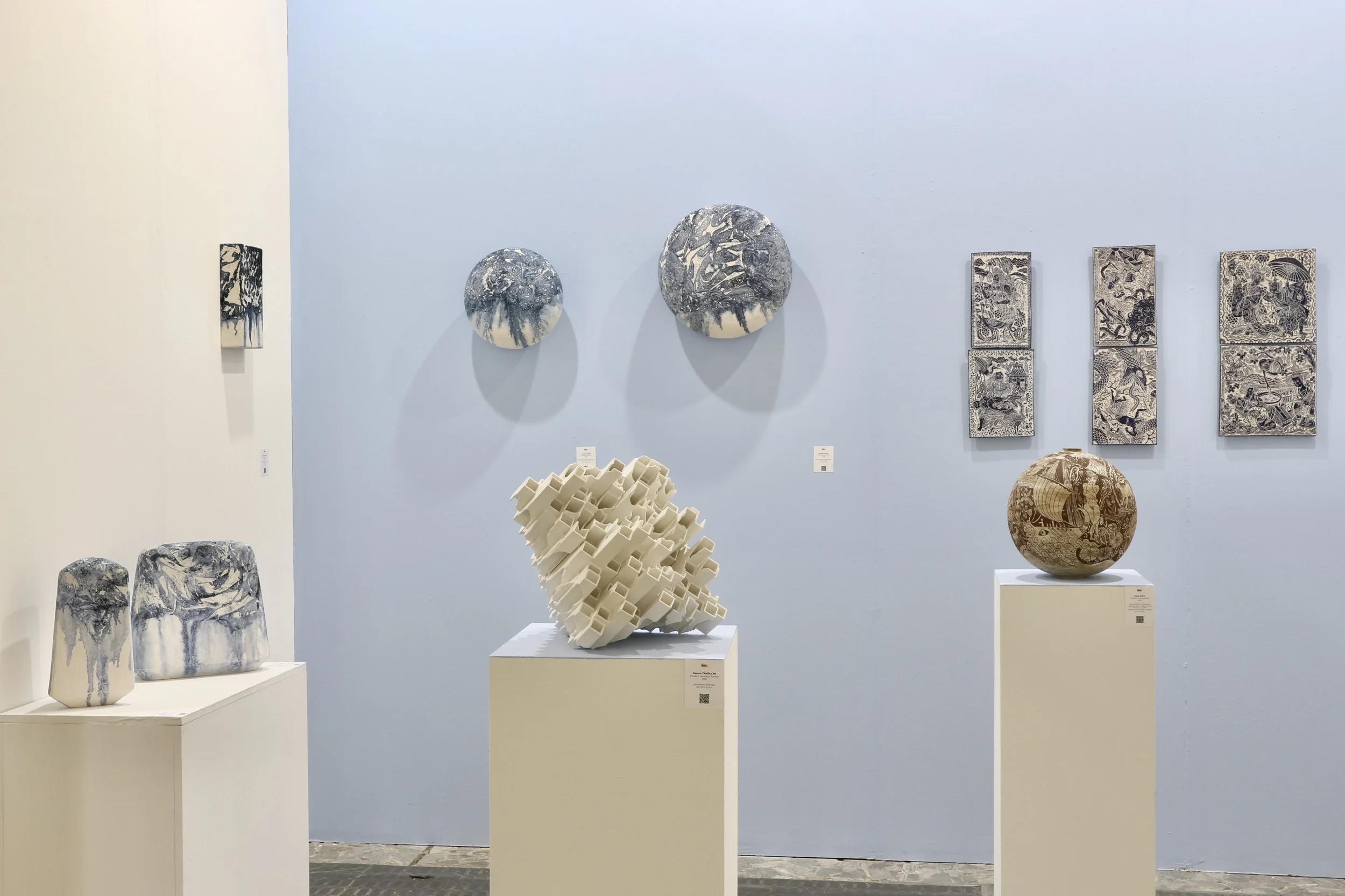
The Ancient East
7 large handmade tiles telling stories from the ancient East, on display at The Others Art Fair (Turin, Nov. 2-5 2023) with @eshgallery


The story of Tamatori-hime ("Jewel-taker Princess"), was one of Utagawa Kuniyoshi's favorite ukiyo- e subjects and is a recurring subject in Yakuza body tattoos.
Tamatori was an Ama, a pearl diver who dove deep underwater to the bottom of the ocean to steal back a priceless jewel form a Dragon King name Ryūjin.
The jewel belonged to her husband, Fujiwara no Fuhito, and had been stolen during a storm. Tamamo sacrificed her own life after fighting numerous sea monsters. Just before the dragon caught her, Tamatori-hime remembered a legend: dragons can only take things from the living. They cannot remove things from a dead person. She therefore thrust her knife into her chest, hid the jewel inside her, and slowly floated up to the surface of the sea.
With her last breaths, she told Fuhito where she hid the jewel, and she begged him to look after their son.

“Tamatori-hime diving deep underwater to steal back the Jewel from the Dragon King (I)”

“Tamatori-hime diving deep underwater to steal back the Jewel from the Dragon King (II)”
Next two pieces are inspired by classic ukiyo-e themes in the late 18th century: fashionable beauty and kabuki actors. Katsukawa Shunshō and his students dominated the actor print genre: his innovative portraits clearly depicted actors not as interchangeable bodies with masks, but as individuals, distinctive personalities whose postures and colorful, made-up faces were easily recognizable to the viewer. Previously, only stereotypes were portrayed and the characters could only be identified by text notes added to the woodcut print.
Similarly, female beauty was portrayed, in imaginary or everyday scenes: artists of the time idealized the female form, observing it in virtually all its poses, casual and formal.

“Courtesans and a monkey”

“Kabuki actors”

“The Divine Farmer tastes countless unidentified herbs every day” (I)
Shennong is a mythical Chinese god who lived, according to legend, around 5,000 years ago. He had the body of a man, an ox-like head and a transparent abdomen.
There were no medicines at that time, but Shen Nong thus decided to do everything in his power to expand his knowledge in the field of medicine.
Every day he ventured into the forest in search of wild plants and tasted as many as he could find. He classified them by taste and characteristics-in this his transparent stomach proved useful-and discovered those that were poisonous and those that had healing properties. In total he identified 365 medicinal herbs.

“The divine farmer tastes countless unidentified herbs every day” (II)

“Shen Nong accidentally discovers an antidote to any poison”
How was Shen Nong able to eat countless unidentified herbs every day while managing to avoid poisoning himself? It actually happened up to seventy times a day. However, Shen Nong had discovered a special tea that acted as an antidote that cured all kinds of poison.
One day Shen Nong was preparing a fire to boil water when some leaves from a burning tea twig accidentally fell into the cauldron. Shen Nong took a sip, and discovered that this drink could remove the toxins from all the harmful substances he tried to digest.
This special tea allowed him to live to the ripe old age of 120.